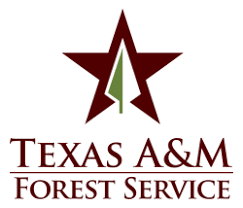COLLEGE STATION, Texas—Wildfire activity is forecast to increase Friday through Monday along and west of I-35 and into South Texas as dormant vegetation dries and becomes receptive to fire ignitions.
An abundance of freeze cured grasses observed in these regions has contributed to recent wildfire activity and will once again be a factor in the increased wildfire potential this weekend. Wildfire potential will be greatest west of I-35 Sunday and Monday around Wichita Falls, Mineral Wells, Lampasas, San Angelo, Midland, Lubbock, Childress and Abilene as temperatures warm into the mid 70’s and low 80’s combined with increased wind speeds over dry, dormant vegetation.
On Tuesday, wildfire activity will be confined to the pre-frontal environment in Southwest Texas as an arctic cold front pushes to the south.
Since Monday, local and state fire resources, including Texas A&M Forest Service firefighters, responded to 91 wildfires that burned 7,312 acres.
The dormant fire season, occurring during winter and spring, is generally characterized by freeze-cured grasses across the landscape and increased wind speeds surrounding dry cold front passages. Peak fire activity during the dormant fire seasons occurs mid-February through mid-April.
“Wildfire activity has increased across the state and is driven by underlying drought and above normal grass production from last year’s growing season,” said Wes Moorehead, Texas A&M Forest Service Fire Chief. “We have increased the number of personnel, equipment and aircraft in state to assist with response as we’re concerned about large areas of the state.”
Texas A&M Forest Service has fully staffed task forces and suppression equipment staged in Victoria, Kingsville, Childress, Amarillo, Lubbock, San Angelo, Burkburnett, Fredericksburg, Smithville, McGregor, San Angelo and Mineral Wells.
Additional agency personnel and overhead, including incident commanders with advanced qualifications, are prepositioned across areas of concern.
Texas A&M Forest Service has increased the number of aviation resources available in state with the addition of six single engine air tankers and 2 type one helicopters. In total, two large airtankers, nine single engine air tankers, two type one helicopters, two type 3 helicopters, two air attack platforms and two aerial supervision modules are staged in state to assist with wildfire response efforts.
“This year, we’ve utilized aviation assets for response in areas with increased wildfire activity,” said Jared Karns, Texas A&M Forest Service Planning and Preparedness Department Head. “There is continued potential for wildfire activity to occur, and we want to be prepared by having aircraft in state, ready to respond.”
Texas A&M Forest Service and Texas Division of Emergency Management also worked together to mobilize three additional strike teams via Texas Intrastate Fire Mutual Aid System (TIFMAS) for a total of six teams that will provide wildfire incident support.
Nine out of 10 wildfires in Texas are human caused. Texas A&M Forest Service encourages the public to avoid outdoor activities that cause a spark while warm, dry and windy conditions are present.
For current conditions and wildfire outlook, visit the Texas Fire Potential Outlook https://bit.ly/3kemhbG.
Texas A&M Forest Service does not own any aviation resources but instead uses federal aviation contracts through the U.S. Forest Service and Bureau of Land Management for all firefighting aircraft.
